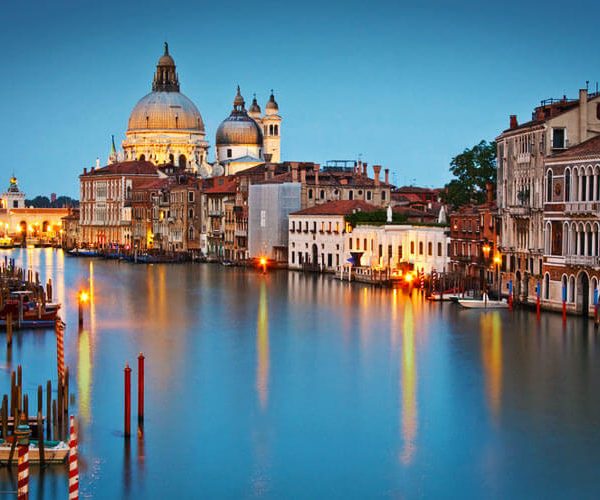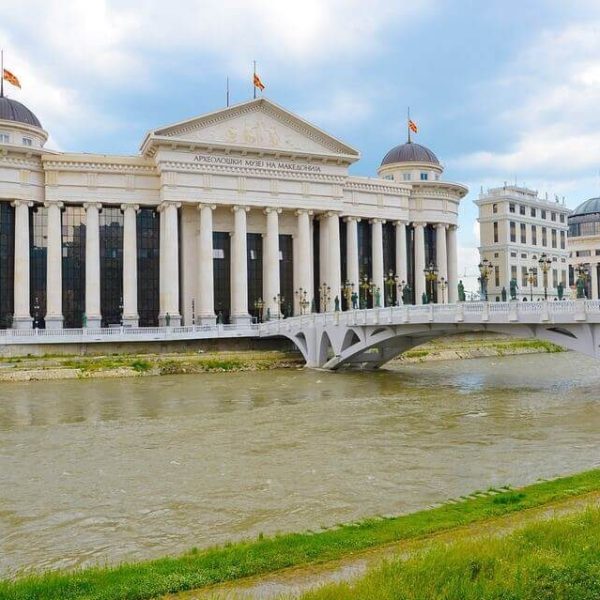Description
Best of Central Europe – Imperial Legacy

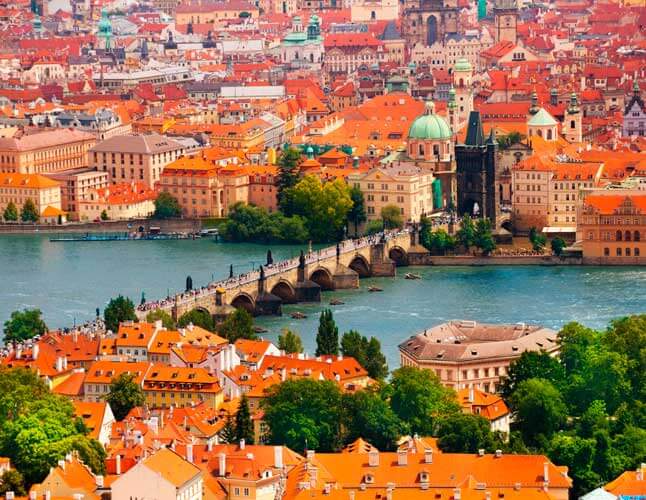
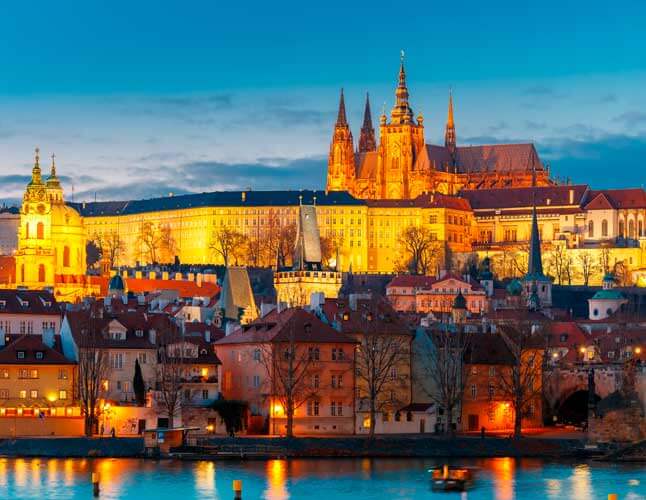
Our multi-day tour package Best of Central Europe – Imperial Legacy takes you from Austria to Czech Republic, Slovakia, Hungary, Slovenia, “the Green Heart of Europe”, and Croatia in 12 days. Intertwined with common history and rich in language diversity, countries of Central Europe are similar, yet so different. This tour is a great opportunity to visit the greatest attractions of the former Austro-Hungary (a.k.a. the Dual Monarchy), such as Ljubljana, Lake Bled, Postojna Cave and Predjama Castle, Vienna, Karlovy Vary, Prague, Brno, Budapest, Bratislava and Zagreb, and learn about the history that connects them. Let our professional tour guides take you on a journey to unravel the mysterious imperial legacy of Central Europe and create memories for a lifetime!
Highlights: Vienna, Karlovy Vary, Prague, Brno, Bratislava, Budapest, Zagreb, Ljubljana, Postojna Cave, Predjama Castle, Lake Bled
Send us your request:
- Duration: 11 nights / 12 days
- Tour package includes:
- Pick-up and drop-off at Vienna Schwechat Airport,
- All transportation per program,
- Sightseeing per program,
- Entrance fees to: Schönbrunn Palace, Prague Castle, Fisherman’s Bastion, Hungarian Parliament, Postojna Cave, Predjama Castle,
- Private vehicle with driver,
- English-speaking guide,
- 11 breakfasts,
- 11 overnight stays on twin/double sharing basis in 3* or 4* hotels: 2 nights in Vienna, 1 night in Karlovy Vary, 2 nights in Prague, 2 nights in Bratislava, 1 night in Budapest, 1 night in Zagreb, 2 nights in Ljubljana,
- All applicable tolls, fees and taxes.
TOUR DETAILS
Day 1: Arrival
Our agent will welcome you at Vienna Schwechat Airport and take you to your hotel for check-in (after 14:00). On the way there, you will drive through the 5.2 km long circuit “Vienna Ring Road”, which surrounds the Innere Stadt. The famous psychoanalyst Sigmund Freud walked around the Ring daily. From there you can spot prominent Vienna’s buildings: UNO City (Vienna International Center), Giant Ferris Wheel in the Prater Park, Austrian Parliament, Imperial Court Theatre, City Hall, University, Vienna State Opera, Museum of Art History, and Museum of Natural History. Overnight stay in Vienna.
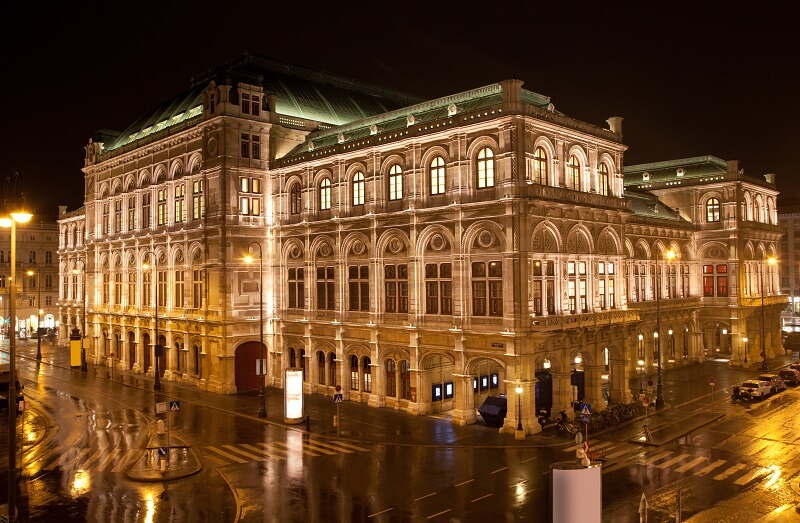
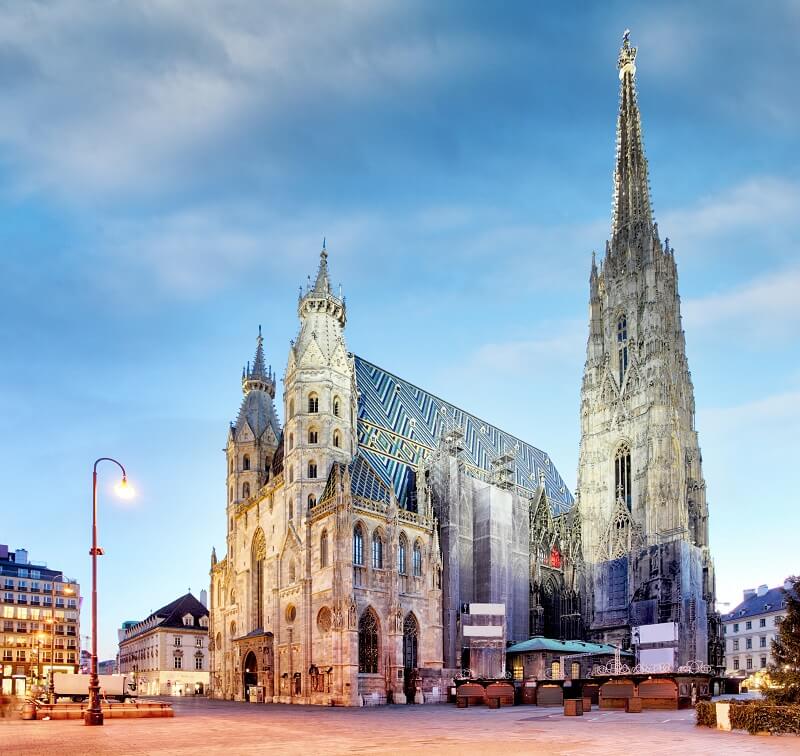
Day 2: Vienna
After breakfast, we will go on a guided walking city tour, where you can learn more about Vienna and its attractions. We will see the Vienna State Opera, Maria Theresa Square and City Hall, which was built in the prominent Neo-Gothic style, and many other sites en route: the main city promenade Kärntner Straße, which leads to St. Stephen’s Cathedral, the most famous Viennese cathedral; as well as the former imperial palace Hofburg Palace, which hosted emperors of the Habsburg dynasty, and walk around the Hofburg area (outside). It was the principal imperial winter residence, while Schönbrunn Palace was the summer residence. Today it serves as the official residence and workplace of the President of Austria. We will of course also visit the famous Baroque palace Schönbrunn Palace with its glorious gardens, listed on the UNESCO World Heritage List – right after a short photo stop by the Belvedere Museum. Overnight stay in Vienna.
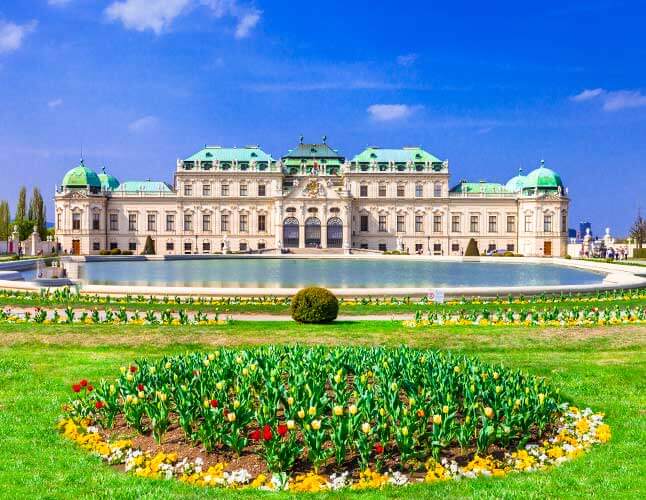
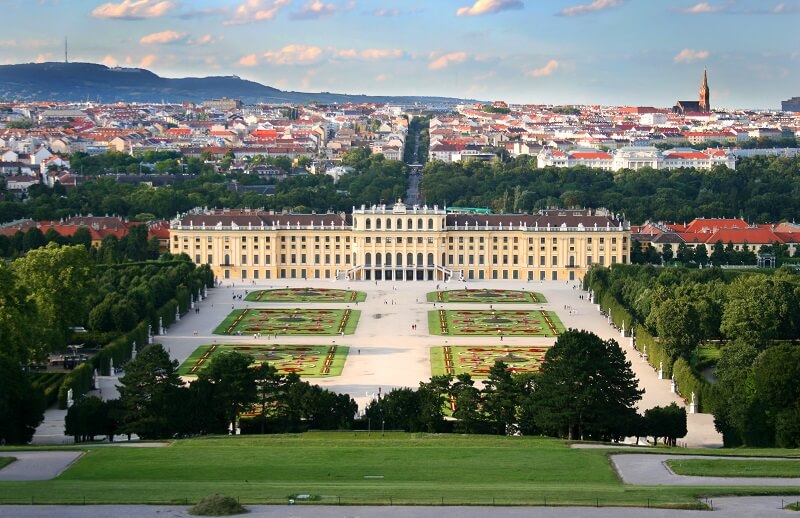
Day 3: Karlovy Vary
After breakfast, we will head towards Czech Republic. In the afternoon, we will arrive in Karlovy Vary (Carlsbad in German), one of the most famous spa towns in the world. It was founded already in the second half of the 14th century. 13 main springs of thermal mineral water have been discovered here and since the 19th century, Karlovy Vary has become the most popular tourist destination of VIP’s throughout Europe. The city is also known for its film festival and liqueur “Karlovy Becherovki”, which has been manufactured since 1807. You can have the opportunity to taste this bitter yellow-green liquor later in the evening by visiting the Jan Becher Museum or in one of the local restaurants. Overnight stay in Karlovy Vary.
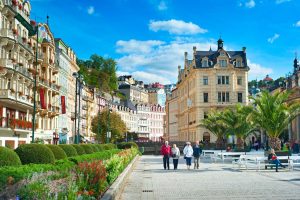
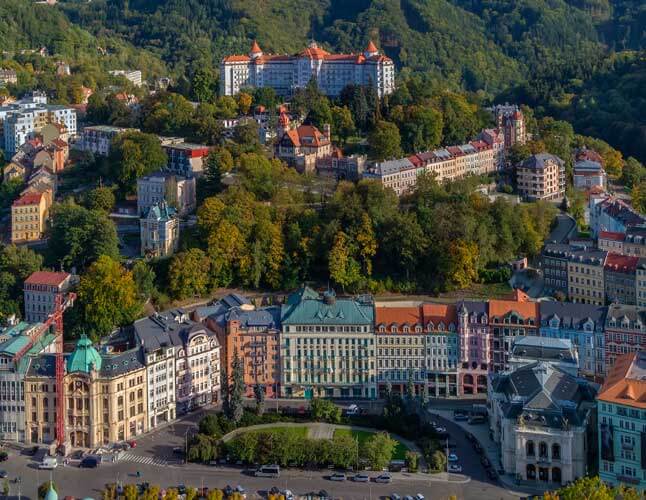
Day 4: Prague
After breakfast, we will head towards Prague, the capital city of the Czech Republic. It is also called “Golden Prague”, the city of one hundred towers. During our city tour, we will discover the Prague Castle District “Hradcany”, a huge castle complex, where we will see St. Vid Cathedral and the Royal Palace. We will visit the famous Golden Lane, where writer Franz Kafka created his work, and walk through the Charles Bridge, one of the oldest stone bridges in Europe dated from the 14th century. If the weather conditions are favourable, we can board a boat and sail down the Vltava (optional). The famous Czech composer Bedřich Smetana dedicated the symphonic poem called “My Homeland” to this river. In one of the famous Czech pubs downtown, you can treat yourself to a pint of excellent Czech beer, a beverage that is drunk here more than anywhere else in the world. Overnight stay in Prague.


Day 5: Prague
After breakfast, we will walk to the Old Town Square which is famous for its old town hall, its astronomical hour dated from the 15th century, the monument of the Czech reformer Jan Hus and the Týn Church. Wenceslas Square is the square where Czech history took place and is recognizable for the Vaclav monument, dedicated to the Czech king and saint from the 10th century. On the square, we can see a memorial monument in the spot where a Czech student Jan Palach committed suicide in a political protest against the Warsaw Pact armies entering Czechoslovakia in January 1969. Overnight stay in Prague.
*Optional (surcharge): Visiting the Jewish part of Prague, Josefov, and the Old-New Synagogue with its cemetery.
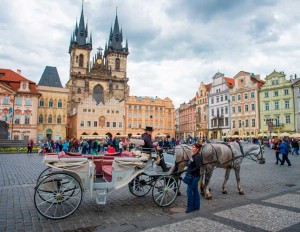

Day 6: Brno
After breakfast and check-out, we will drive to the second largest Czech city Brno, the capital of Moravia, once a historic province of the Austro-Hungarian Empire. It was named after the Morava River and its name is of Slavic origin, meaning water and wetlands. We will go on a panoramic city tour and spot the fortress of Špilberk above the city, which was a prison for enemies of the Austro-Hungarian Empire for centuries and is a museum today. Two majestic church bell towers Peter and Paul, dated from the 14th century, also rise above the city. In the Jacob Church in the centre of the city, there is a small man showing his bare buttocks to the people passing by. Moravia is also known for its excellent wines, especially white wines. In the evening hours, we will head towards the capital city of Slovakia, Bratislava. Overnight stay in Bratislava.
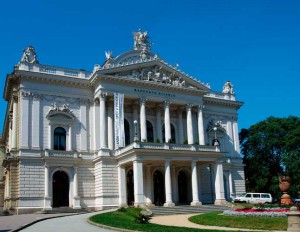
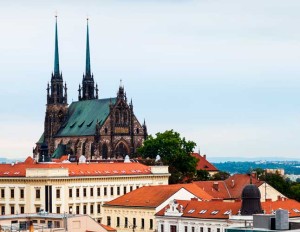
Day 7: Bratislava
After breakfast, we will go on a panoramic tour to see the city’s main attractions. We will see the majestic cathedral dedicated to St. Martin in which, during the time of Turkish occupation of Budapest, the Hungarian kings were crowned. We will walk under the Michalová Tower, the only remaining medieval gate which leads to the city and ranks among the oldest town buildings, see the Renaissance Roland Fountain and the classicist Primasovo (archbishop) Palace, where the “Peace of Bratislava” was signed in 1805 after the defeat of the monarchy against Napoleon. On route to the Old Town, there are lovely statues exhibited to warm up the atmosphere, such as the beautiful Naci, Napoleonic soldier, Čumil and others. We can also spot Mozart’s palace, where the famous composer had one of his first concerts as a child, the Slovak National Theatre and a monument dedicated to the Danish storyteller Hans Christian Andersen, who visited Bratislava in 1840 and got his inspiration for the fairy tales “The Ugly Duckling” and “The Little Match Girl” there. Overlooking the city is the famous Bratislava Castle, where the Celts controlled the trade route and its passage over the Danube from. The last major renovation of the castle was commissioned by the Habsburg Empress Maria Theresa in the 18th century when the castle was renovated in Baroque style. In the evening, we will drive to Budapest, an old metropolis with a turbulent past. The Hungarian capital is also called “the beauty on the Danube”, mainly because of its picturesque location and grand architecture from the golden era of the city in the second half of the 19th century, which gives it a special touch. Overnight stay in Budapest.
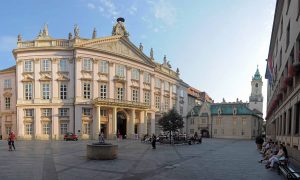
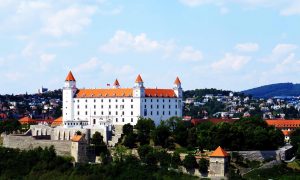
Day 8: Budapest
After breakfast, it is time to discover Budapest and visit its main attractions. We will drive across the Chain Bridge to the Castle Hill, where Matthias Church, Fisherman’s Bastion and Buda Castle (a.k.a. the Royal Palace) stand, offering a beautiful view of Budapest. After our guide has shown you around the Castle District, we will continue by visiting the Hungarian Parliament Building, which is the third largest Parliament building in the world. We will continue with a panoramic tour of the city centre, passing by Liberty Square, the magnificent St. Stephen’s Basilica, Vaci Street, which is considered the heart of the city, and other prominent sights. There will also be some free time for you to buy souvenirs, have dinner and spend the evening exploring the city on your own. Overnight stay in Budapest.
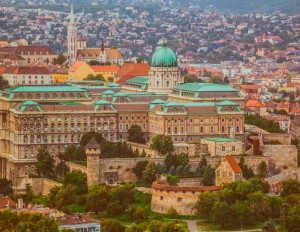

Day 9: Zagreb
After breakfast, we will head towards Croatia. The path will lead us through the picturesque Hungarian Lake Balaton, the largest freshwater lake in Central Europe. After crossing the Hungarian border with Croatia, we will leave the Pannonian Plain, which is the residue of the ancient Pannonian Sea, and drive towards the hilly Croatian Zagorje. We will arrive in Zagreb in the afternoon, followed by a panoramic city tour. We will see the National Croatian Theatre, a Neo-Baroque art building built by the famous Viennese architectural company Fellner & Helmer, stroll down the blooming park Zrinjevac, which is a popular promenade with its pavilion and a number of wells, King Tomislav’s monument will remind us of the 10th century, when Croatia had an important military and political role in the region, we will visit Ban Josip Jelačić Square and Gornji Grad. Overnight stay in Zagreb.
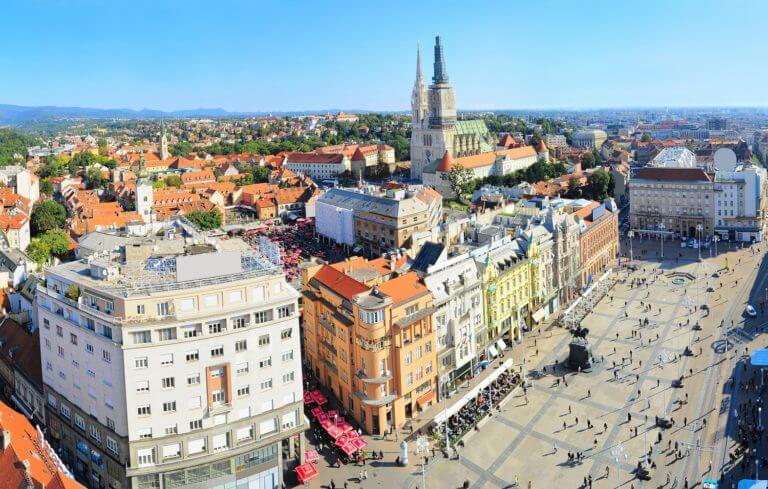
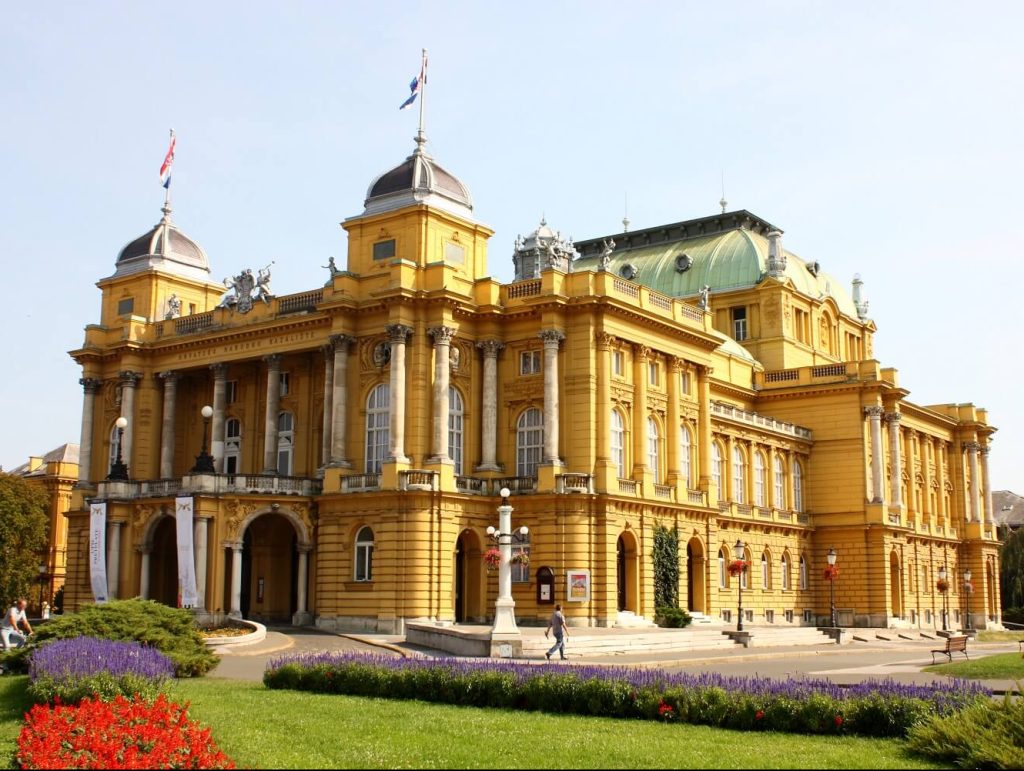
Day 10: Ljubljana
After breakfast and check-out, we will continue our journey towards Slovenia, where we arrive around noon. Our tour guide will take you on a panoramic sightseeing tour of Ljubljana to show you its main attractions, from Prešeren Square and Tromostovje (Triple Bridge) to Town Square with its baroque fountain and Town Hall. We will climb the Ljubljana Castle Hill and admire its panoramic view of this lovely city. You will have one hour free for visiting the castle (optional) or enjoying a coffee break. Overnight stay in Ljubljana.
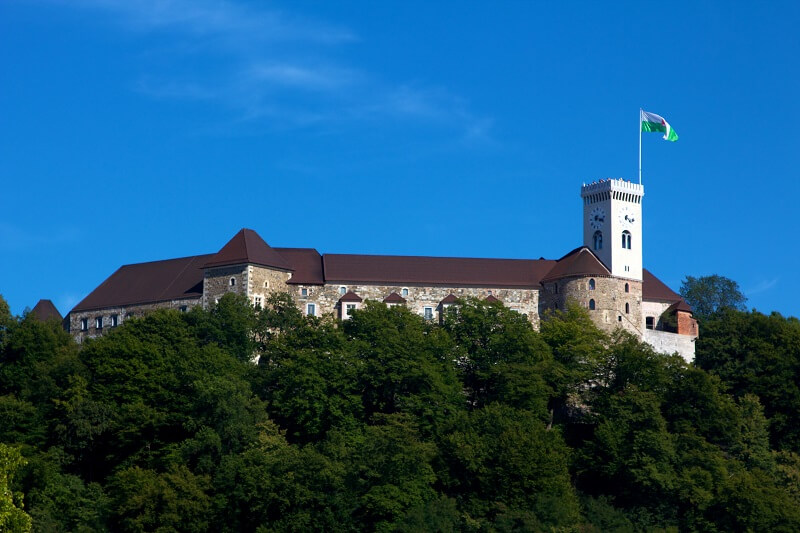

Day 11: Postojna Cave, Predjama Castle, Lake Bled
After breakfast, we will visit the Postojna Cave, one of the largest Karst landmarks in the world. An electric train will take us through the tunnels of the cave, which is with its 20 km long cave system the most impressive and the most visited cave in Europe. We will be able to spot human fish, the most famous cave animals in the world that used to be believed to be dragon offspring. We will continue with a tour of the mighty Predjama Castle from the 12th century, mounted on a 123 m high cliff above the Lokva River. There are many mysterious tales and legends about the castle and its knights. The most famous of them all is the story of Knight Erazem of Predjama, who rebelled in the 15th century against the emperor and became the first Slovenian Robin Hood. Today’s castle is from the Renaissance period and incorporates a museum.
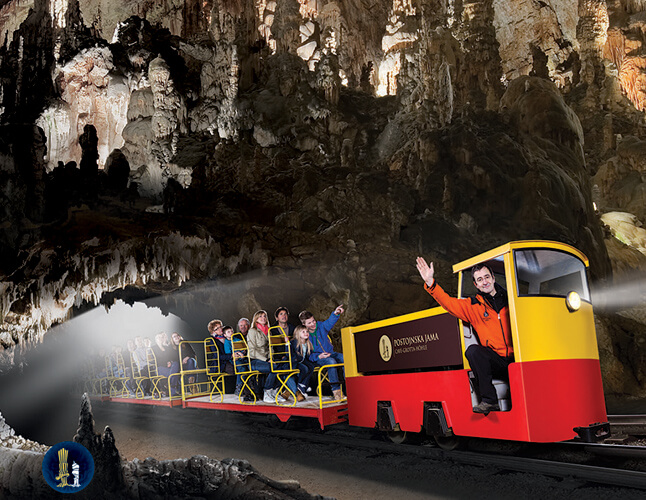

Day 12: Departure
Check-out, transfer to Vienna Schwechat Airport.
PLEASE NOTE:
In the case of unexpected events (traffic conditions, weather conditions or other inconveniences that we cannot influence), we can change the order of trips and sometimes the contents to make the tour as logistically convenient as possible.
What to see in Vienna
Vienna is a former imperial city with a high quality of life and world-wide known tourist attractions such as the Vienna State Opera, Maria Theresa Square and City Hall, the main city promenade Kärntner Straße, St. Stephen’s Cathedral, Hofburg Palace, Schönbrunn Palace with its glorious gardens (UNESCO World Heritage Site) and Belvedere Museum.
What to see in Prague
“Golden Prague” boasts outstanding architectural sites that are worth visiting: Prague Castle, St. Vid Cathedral, Royal Palace, Charles Bridge, Old Town Square, Wenceslas Square, Týn Church, Dancing House, famous monuments such as the Vaclav Monument, Jan Hus Monument, Statue of Franz Kafka and the unique Lennon Wall.
What to see in Bratislava
Bratislava’s top attractions are the Renaissance Roland Fountain, Fountain of St. George and the Dragon, the classicist Primasovo (Archbishop) Palace, Mozart’s palace, St. Martin Cathedral, Michalová (St. Michael’s) Tower, Slovak National Theatre and the famous Bratislava Castle. On route to the Old Town, lovely statues of Naci, Čumil and others are exhibited.
What to see in Budapest
One of Budapest’s staples is driving across the Chain Bridge to the Castle Hill, where Matthias Church, Fisherman’s Bastion and Buda Castle (a.k.a. the Royal Palace) stand, offering a stunning view of the city. In the city center, you can see Liberty Square, St. Stephen’s Basilica, Vaci Street (considered the heart of the city), Great Market Hall and the prominent Danube.
What to see in Zagreb
Must-see attractions in Zagreb are Donji grad, Kaptol with the Zagreb Cathedral (the largest church in Croatia), Gornji Grad, Bloody Bridge, Stone Gate and St. Mark’s Square. As Croatia’s capital city, Zagreb has a lively urban, cultural and art scene full of lovely cafés, events, gallery and other exhibitions.
What to see in Slovenia
With its breathtaking landscapes, green forests, emerald rivers, deep blue Alpine lakes, exciting mountain tops, scenic historical towns and castles, Slovenia is like a real size postcard! It also boasts three UNESCO World Heritage sites: Škocjan Caves, Idrija and the Ljubljana Marshes, where great mysteries unravel.
What to do in Vienna
When in Vienna, you simply have to taste the most famous Viennese delight Sacher-Torte (we recommend Hotel Sacher Wien, where it was originally made) and drive around “Vienna Ringstrasse”, which surrounds the Innere Stadt and offers a view of Vienna’s prominent buildings: UNO City, Giant Ferris Wheel, Austrian Parliament, Imperial Court Theatre, City Hall, University, Museum of Art History and Museum of Natural History. On the top of our to-do list is also visiting the Viennese Prater amusement park.
What to do in Prague
You can stroll through Hradcany (Castle District), visit the Golden Lane, board a boat and sail down the Vltava River, check if the famous Astronomical Clock in the Old Town is punctual, treat yourself to a pint of excellent Czech beer in one of the famous pubs downtown or to a cup of coffee in the unique Café Jedna inside the Veletržní Palace.
What to do in Bratislava
Slovakia’s capital boasts one of the loveliest city centers, where you can take a really enjoyable walk and feast your eyes on the local attractions. Definitely worth visiting are Bratislava Castle, Bratislava City Museum, Bratislava Forest Park and Botanical Garden. You can also stop by the Slavin Memorial above the city, which offers a striking view of Bratislava.
What to do in Budapest
You can visit the Hungarian Parliament Building, which is the third largest Parliament building in the world. For a unique and truly unforgettable experience, you can take a river cruise along the banks of the Danube from the Margaret Island and pass through all the important bridges, the facades of the Parliament and the famous Citadella.
What to do in Zagreb
For the best cultural experience of Zagreb, you must visit its colourful markets, starting with “Britanski trg” (British Square), the oldest open-air market only 10 min walking distance from the main square. If you wish to escape from the city rush, you can stroll through the Maksimir Park, visit the Botanical Gardens or take a trip to Plitvice Lakes National Park.
What to do in Slovenia
Take time to enjoy a city tour of Ljubljana, discover Slovenia’s natural treasures, listen to our tour guide’s interesting stories about Slovenia’s historical and cultural heritage, taste the local cuisine and exquisite wine, relax or try some exciting activities, such as rafting, kayaking, hiking, biking and SUP-ing.
